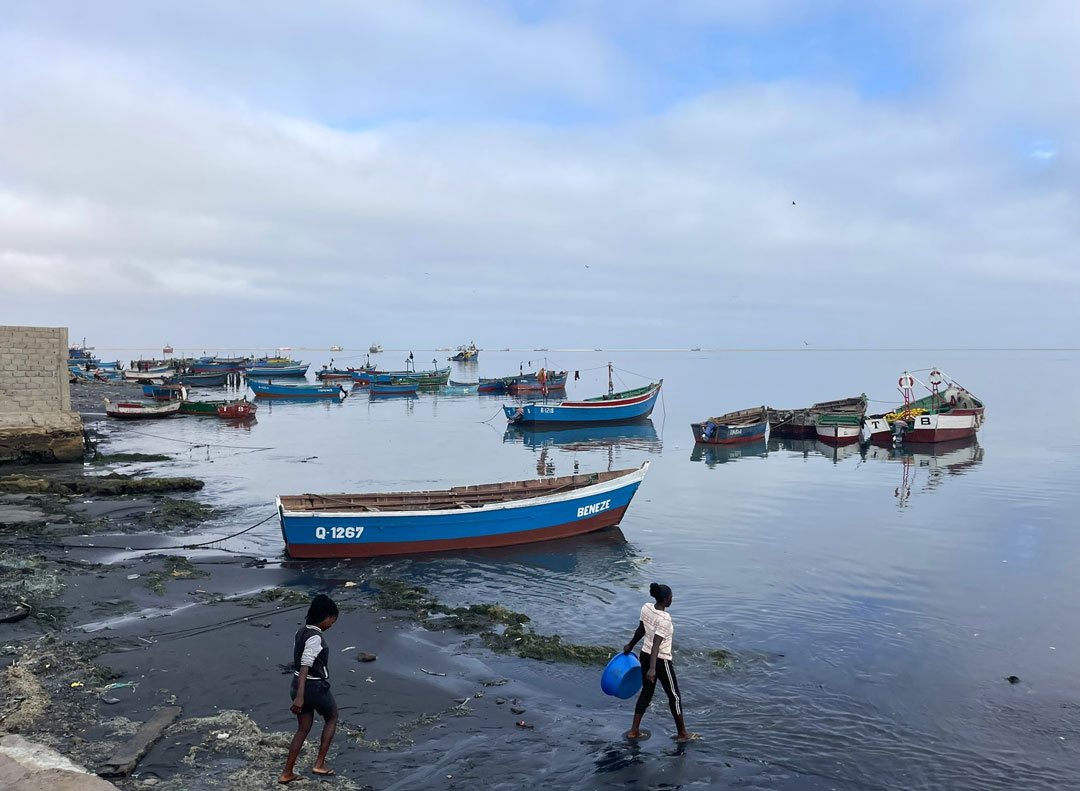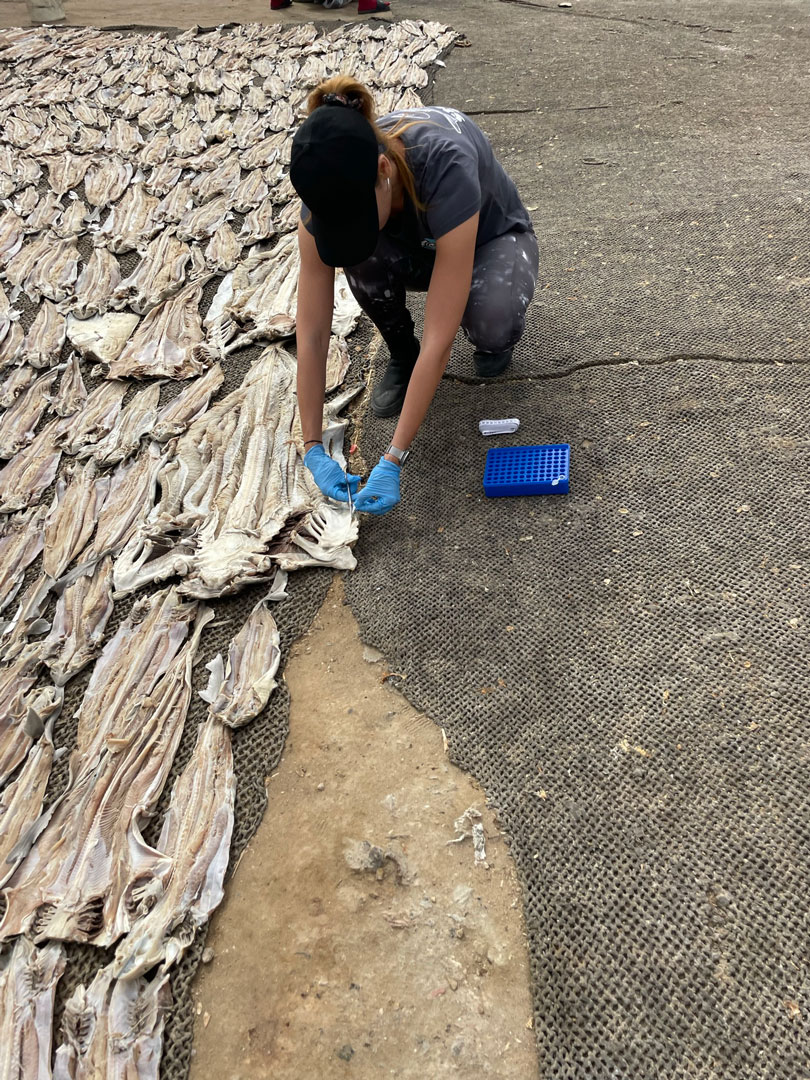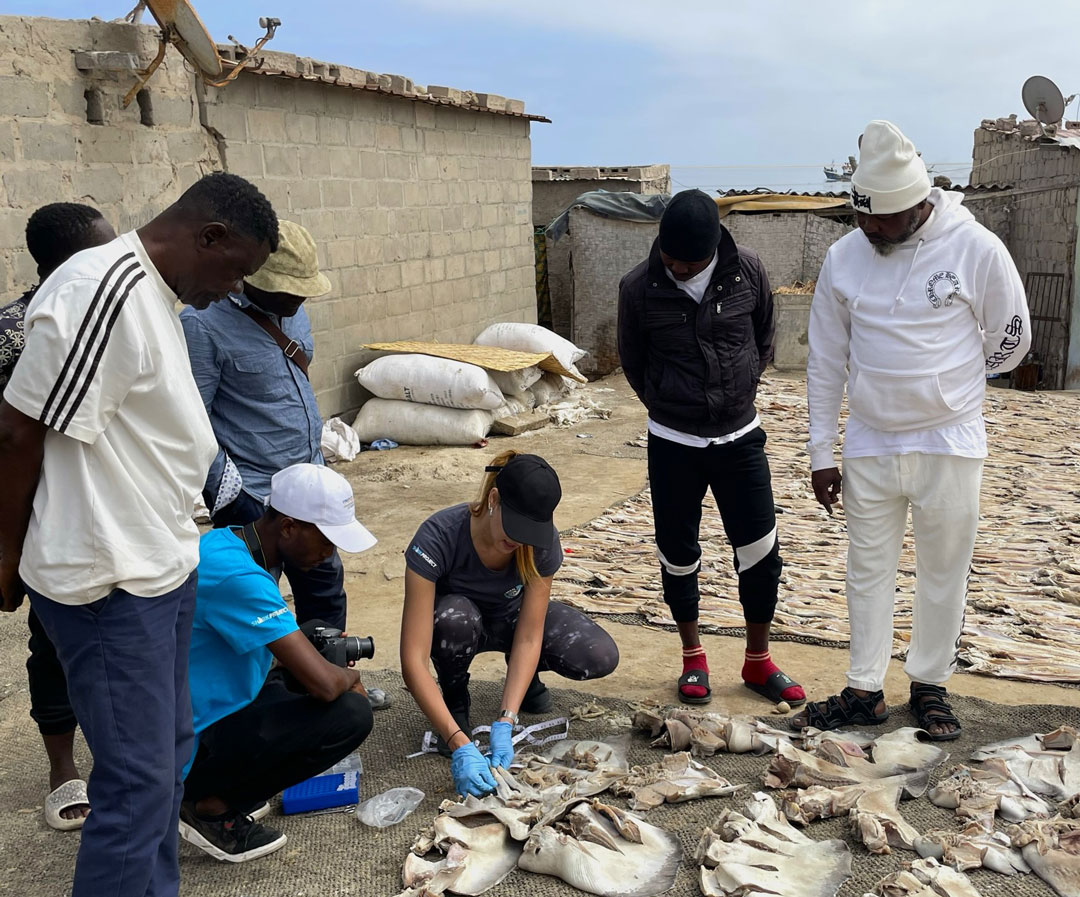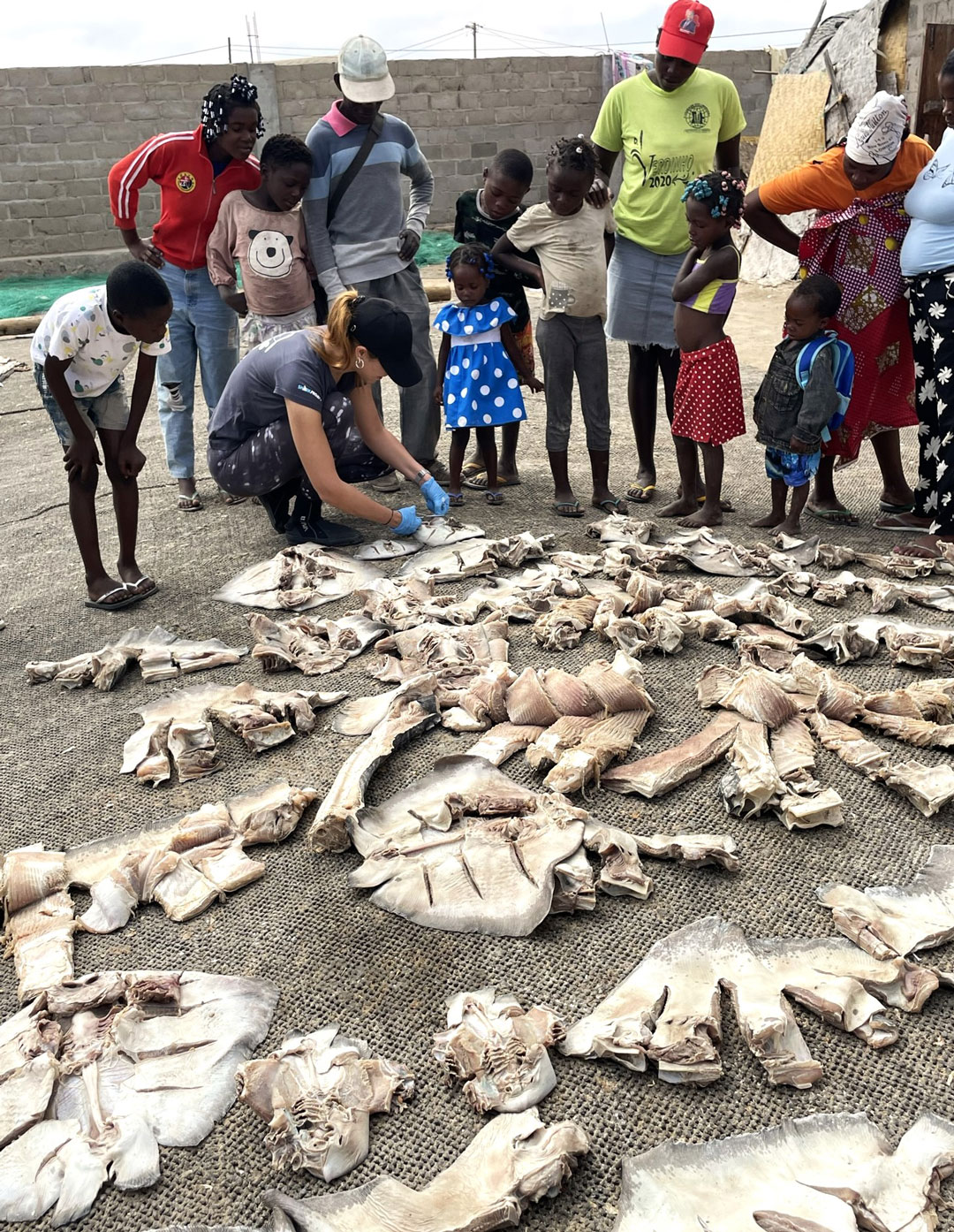Finding the dried sharks of Angola
While visiting elasmobranch landing sites in the province of Namibe, south of Angola, we observed that the main method of preserving and storing sharks and rays is salting and drying their products.

Location of the small-scale fishery landing site in the region of Namibe, south of Angola. Photo © Ana Lucia Furtado Soares
Drying sharks and rays is a traditional method of preserving their meat for extended periods without refrigeration. In many coastal regions of Africa, access to reliable electricity or refrigeration is limited, which makes drying an effective way to store and consume shark and ray meat over time.
Thus, dried shark and ray meat have a longer shelf life than fresh or frozen beef, allowing communities to have a readily available food source during times of scarcity or when fishing conditions are challenging.

Tissue sampling to access the biological characteristics of dried sharks. Photo © Ana Lucia Furtado Soares
Dried shark and ray products provide economic opportunities for fishers and coastal communities, directly contributing to their livelihoods. Furthermore, dried ray meat holds cultural significance in many coastal communities, and it is often used in traditional dishes and plays a key role in local cuisines.

The main responsible small-scale fishers of this community learn about the objectives and methodologies of the Angola Elasmo Project. Photo © Ana Lucia Furtado Soares
It is important to highlight that sustainable fishing practices are crucial to ensure the conservation of shark and ray populations and the long-term viability of this practice in Angola. Thus, a positive engagement with fishers and coastal communities is extremely valuable to ensure we can raise awareness of sustainable fishing practices and the importance of shark and ray conservation for the ecosystem.

Biological sampling together with members of the fishery community, including children, which are usually very curious and enjoy learning about sharks and rays. Photo © Ana Lucia Furtado Soares
